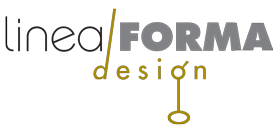Want to take a look? No problem. Welcome to my magic show.
StormwateRx LLC designs, manufactures, installs and maintains stormwater filtration and treatment for industrial customers. Their products are container-sized units that are installed above and below ground.
Photos of onsite installations all had too many distractions, or couldn’t show enough of the product to be used effectively on their website and at trade shows. So I built models of each of their four product lines, and animated two of them. The other big advantage the models offered was transparency — I made the front wall of the above ground container almost transparent. For the underground chamber, I made two front walls and the top surface transparent and carved out some of the earth, so I could rotate my camera around the corner and demonstrate the processes of each model.

Transparency: On the Aquip above ground product shown here, the first photo is the finished 3D model as the actual product appears. To the viewer, it’s just a large nondescript blue metal container. The second photo shows what happens when the front wall is made transparent. For example, three layers of filtration materials are revealed in the main chamber, when only the top layer shows, in the real world. And when I animated the model later, the front wall allowed the viewer to watch the chambers fill up with raw water sequentially, ultimately leaving the last chamber clean.
My digital warehouse: When the Aquip model was finished being rendered and animated, the digital files were all saved to disk, and when the client expanded the product line, the original model, lighting and camera positions were intact and ready for the next “photo shoot”, an impossiblity in the real world. The product upgrade is a large base unit the original product sits on, with multiple optional add-on filters available for specific industry filtration needs. First I rendered the new base unit. Then, I put the original product on the new base and rendered solid and semi-transparent versions of it with each filter option offered.

Historic documentation: Each time a model is completed, it’s saved and stored. As the product line grows, duplicates of the original model can be changed and updated to test concepts, colors, materials and options. Over time, the models tell an accurate digital history of changes over the life of the product line, and beyond.
Lightweight: And the best feature of all, is it’s so darn easy to move around. On this particular product, those four eyelets sticking up above the top edge are for a giant crane to lift the product up and move it around. Not a quick, cheap or easy operation to accomplish or document. I can move my models with one hand! Accurately and quickly!
Photos of actual installations are necessary for showing an in-use, real world context. But to demonstate how processes or products actually work, utilizing a model can remove all the surrounding distractions, concentrate only on the important details, and complement the on-site photos with new or additional information and details of the story.
So, there’s a little look behind the wall—and, it’s still magic!
Share this:

